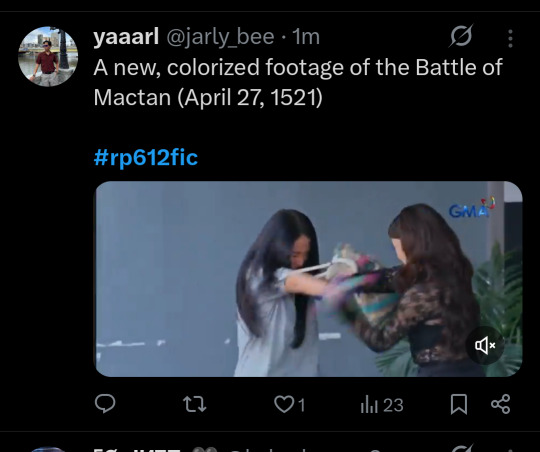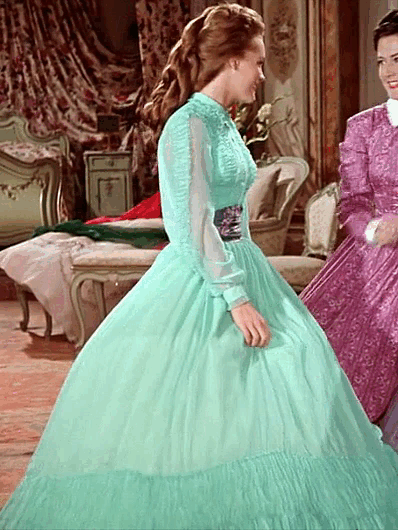"I'd like to offer you moral support, but I have questionable morals" -by someone that is not me
Don't wanna be here? Send us removal request.
Text
sorry for always being the first like in your fic, i just check the 'x reader' hashtag constantly

5K notes
·
View notes
Text
My ancestors looking down at me as I talk about how much I love white men

6K notes
·
View notes
Text






Happy Independence Day, Philippines.
My favourite time of the year(for a particular reason)
(credits po sa mga owners ng pics, screenshots ko lang po kasi yan)
10 notes
·
View notes
Text
It's that time of the year
Maligayang Araw ng Kalayaan! And y'know what that means, more RP612FIC posts!
3 notes
·
View notes
Text




The Sissi Trilogy + Costumes
Elisabeth of Austria-Hungary's turquoise/green dress in Sissi - Fateful Years of an Empress (1957).
// requested by anonymous
82 notes
·
View notes
Photo

A colorized photo of Madam C. J. Walker with her friends and her Ford, the first of her family born free and the first self-made female millionaire in America. She made cosmetics for other black women, and in her will, dedicated 2/3 of her company’s future net profits to charity. c. 1910s
via reddit
10K notes
·
View notes
Text
Fantasy Guide to Early 20th Century Trains

Trains were a popular means of transportation during the early 20th century. The previous decades saw to the explosion of more trains, more services and more tracks linking country communities which were isolated from cities and larger towns. So what do we need to know about trains in the early 20th century?
Typical layout

A basic layout of a train is as follows: passenger compartments, dining cars, luggage and guard vans.
Compartments: Compartments are where the passengers sat. They were divided between three classes – first, second, third. First class compartments were the most expensive. The seats were upholstered, and the floors were often carpeted. They were much larger than the other class compartments. They would be fitted with gas light like the rest of the train, the windows would have curtains, and the walls would often be panelled with wood. Second class compartments were less luxurious but pretty much the same as the first class only smaller and less grand. Third class would feature wooden benches or seats fitted with cushions or fabric, they were smaller and often more crowded. Compartments could be offered as corridor compartments which offered more movement between compartments and cars. Compartments would offer seating areas and areas to store hand luggage. Some trains travelling overnight would offer sleeper cars which offered beds and an area to wash.
Dining Cars: Dining cars were offered on some trains. There would be tables for the passengers to eat and get something to drink. Dining cars were usually offered only to certain classes or segregated by class.
Luggage Cars: Where large luggage would be stored.
Guard Vans: Where railway security staff could get warm. It also held a stove and hand-operated brakes which the designated guard would use to slow the train if needed.
Separation


Trains in this era were divided by class and in some case race. Unlike the American states and South Africa where there were laws preventing certain races from mixing with others or from using any class other than third class, Europe was a little more forgiving in the case of race. However, this is not to say there was no segregation. This was Europe at the height of the age of Empire. People who hailed from the ‘colonies’ were discriminated through subtler means than simple prevention, they would be discouraged from attempting to use the upper class tickets and sometimes they were even treated not as well as other passengers. Class was the main division on the train. First class of course had more ability to move, more access to amenities. They often had separate dining cars where they could sit down to full meals. Larger trains might even offer some other common areas such as smoking compartments. Second class were sometimes permitted to dine in the dining cars but may not have been allowed access to full meals. Third class was not permitted access to the dining cars, often having to bring along meals or buy food at the station before departure. The classes were not allowed to mingle. In cases of a first-class person travelling with a servant, they had the choice to either purchase a first-class ticket for their servant or leave them in third class.
Train and Station Staff


Trains did not run by themselves. The passengers and the train had many needs and there had to be an army of staff available to keep things chugging along *hehe*. That being said, the train staff weren’t the only people who kept things going smoothly, the station staff at each stop would also help out the staff and the passengers.
On the Train:
Drivers: These were the people who drove the train.
Firemen: These were the people who shovelled coal and kept an eye on the steam pressure.
Guards: The guards were there to keep the passengers safe. They sometimes checked tickets and would patrol the luggage cars, mainly to keep an out for anybody sneaking onto the trains without a ticket.
Conductors: Conductors would go from car to car to check tickets, collected any outstanding fares and kept an eye on things in the compartments.
Engineers: Would travel on the train to help out with repairs on the train.
Dining car staff: Such as maids to serve tea and coffee, waiters to serve food and if the train is large enough, kitchen staff and bartenders.
The Station:
Station Masters: Was the person in charge of the station, overseeing the flow of trains and passengers through the station.
Porters: Handled the luggage.
Signalmen: Oversaw the signals to keep the trains on track *hehe*.
Parts of the train

The train is a beast of many parts. A train in this era is a steam train, which links of cars connected together behind a steam engine.
Buffers & Buffing Gear: These are the parts of the train built in to absorb impact.
Cars: The segments of the train.
Couplers: This is what connects the train cars together.
Cowcatcher/Pilot: This is the frame that sits at the very front of the train used to clear things off the track.
Carriages: These are the cars that the passenger compartments are.
Headlamp: This is the light at the front used to improve visibility.
Freight Cars: Used for transporting goods.
Locomotive: This is the train’s engine. It is the driving force of the train, where the driver and the firemen would work.
Truck: The framework that connects the axles to the wheels.
Smokebox: Where the exhaust system of the stream engine is housed.
1K notes
·
View notes
Text
I got like four questions right on University Challenge so basically I’m a genius
18 notes
·
View notes
Text
My characters: *having a peaceful moment*
Me, whipping out my laptop:

3K notes
·
View notes
Text










The Mabin Shrine in Tanauan, Batangas.
Sorry for the pic quality
#the philippines#philippine history#history#filipino#filipino history#field trip#apolinario mabini#mabini#philippines
1 note
·
View note
Text
🌸Describing Scents For Writers 🌸| List of Scents
Describing aromas can add a whole new layer to your storytelling, immersing your readers in the atmosphere of your scenes. Here's a categorized list of different words to help you describe scents in your writing.
🌿 Fresh & Clean Scents
Crisp
Clean
Pure
Refreshing
Invigorating
Bright
Zesty
Airy
Dewy
Herbal
Minty
Oceanic
Morning breeze
Green grass
Rain-kissed
🌼 Floral Scents
Fragrant
Sweet
Floral
Delicate
Perfumed
Lush
Blooming
Petaled
Jasmine
Rose-scented
Lavender
Hibiscus
Gardenia
Lilac
Wildflower
🍏 Fruity Scents
Juicy
Tangy
Sweet
Citrusy
Tropical
Ripe
Pungent
Tart
Berry-like
Melon-scented
Apple-blossom
Peachy
Grape-like
Banana-esque
Citrus burst
🍂 Earthy & Woody Scents
Musky
Earthy
Woody
Grounded
Rich
Smoky
Resinous
Pine-scented
Oak-like
Cedarwood
Amber
Mossy
Soil-rich
Sandalwood
Forest floor
☕ Spicy & Warm Scents
Spiced
Warm
Cozy
Inviting
Cinnamon-like
Clove-scented
Nutmeg
Ginger
Cardamom
Coffee-infused
Chocolatey
Vanilla-sweet
Toasted
Roasted
Hearth-like
🏭 Industrial & Chemical Scents
Metallic
Oily
Chemical
Synthetic
Acrid
Pungent
Foul
Musty
Smoky
Rubber-like
Diesel-scented
Gasoline
Paint-thinner
Industrial
Sharp
🍃 Natural & Herbal Scents
Herbal
Aromatic
Earthy
Leafy
Grass-like
Sage-scented
Basil-like
Thyme-infused
Rosemary
Chamomile
Green tea
Wild mint
Eucalyptus
Cinnamon-bark
Clary sage
🎉 Unique & Uncommon Scents
Antique
Nostalgic
Ethereal
Enigmatic
Exotic
Haunted
Mysterious
Eerie
Poignant
Dreamlike
Surreal
Enveloping
Mesmerizing
Captivating
Transcendent
I hope this list can help you with your writing. 🌷✨
Feel free to share your favorite scent descriptions in the replies below! What scents do you love to incorporate into your stories?
Happy Writing! - Rin T.
13K notes
·
View notes
Text
So I have a crush on this boy(super talino pero basagulero), and I'm friendly with the president of my classroom(ganda, mabait, at matalino rin)
And the class keep shipping them together
Ouch 😭
Like beh full package press namin tas ako dito acads achiever lang kasi bawal maging pangit and bobo at the same time
#xeti'spost#in love ba ako?#or sadyang tanga ako#filipino crush posting#crush posting#crush#send help#ano ba!!!!!
1 note
·
View note
Text
“How could you?” “I can expla-“ “No, I don’t mean morally. Logistically how could you even pull something like this off?”
16K notes
·
View notes











